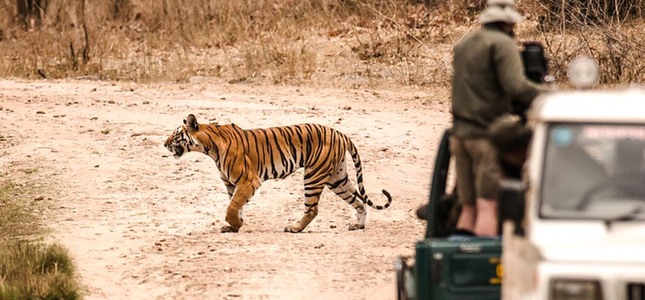
The first episode in the six part series aired on Thursday 23rd October 2014, with the remaining five shows in the Life Story series scheduled to follow weekly on Thursdays at 9pm. It starts out with a scene in which David Attenborough is chilling out with a colony of Meerkats in South Africa and he’s there to see the first steps of the recently born infants as they walk out of the protection of their colony’s tunnel system and face the light of day.
It makes for a cute example of the basic premise of opening episode, First Steps, which looks at surviving infancy, fitting in nicely as the start of the overall “journey of life” concept behind the series, which David Attenborough gives a very cool introduction to. It leads onto the mental young lives of barnacle geese and you soon find out that for every cute moment for the viewers there is an equal amount of peril for the young infants to go through and its this story that the episode tells so well.
The first big and scary thing for a baby barnacle goose to go through is a terrifying sky dive from the protection of their high nest up on the rocks down to the ground to allow them to feed. However, the fall comes just a couple of days after they hatch meaning that they cannot fly and will be hitting the rocky floor below in one way or another, so getting their technique just right is a matter of life and death for the little waddling balls of fluff.
As ever with BBC production values, every shot is stunningly crafted, with excellent HD detail, seemingly perfect timing and an ability to draw out the life story and tension built within the moment. You find out in the “making-of” video at the end of the episode just how much time, effort and skill went into getting the film that they did, which features everything from the sky dives, crushing lows of the terrible numbers game intrinsic to the survival strategy and the little steps to safety that the remaining chicks make.
David Attenborough’s narration is an integral part in the success of the series and if we’re honest there isn’t anyone out there that even comes close to his perfect tones, natural understanding and vocal inflections that go into making him such a great speaker in wildlife documentaries. During the section on a mother and infant sperm whale, his range and ability to adapt to the different situations adds to the wonder of the scenes when the two are swimming together contentedly, emphasises the frantic pace of the scenes where the mother is being chased by a pack of male whales looking to mate and builds the fear for life that is conveyed when they’re attacked by a shark.
Life Story doesn’t just do things on a massively impressive scale though. It also does a pretty good job of showing that no matter where they are in nature, all infants have got a lot to get through before adulthood. Looking at the macro level, we get an impressive insight into the trials and tribulations of the lives of mantids just after they hatch, with everything from killer spiders and their own cannibalistic tendencies to contend with.
Going one size up we get to see the unusual long-eared gerboa bouncing around the Gobi desert, which spends its first night alone in the dark using its massive ears to find some insects to eat. We also get to see a very cool fur seal training pool far away from the preying mouths of killer whales, as well as albatross young making their maiden voyage with snapping sharks all around them waiting for crash landings in the sea.
There’s a lot packed into the hour long show, especially with the added insight of the behind the scenes section at the end documenting the massive falls of the young barnacle geese. It’s also good at coming full circle, following the nature of its subject matter in the series, as it returns to the lives of the baby meerkats that opened the show, finding out more about all of the things it needs to go through from a very young age just to get by, including facing off against a pretty ferocious scorpion.
The crazy thing is that all of this is just the first episode and there’s a whole lot more life stories still to come. The second episode in the series, Growing Up, will be airing on the 30th October 2014 and focuses on the next step in the story as the animals go it alone for the first time, and it’ll be followed by episodes on finding a home, making it through the power pecking order, finding a mate and becoming a parent. If the first episode is anything to go by, they’re all going to be amazing.


